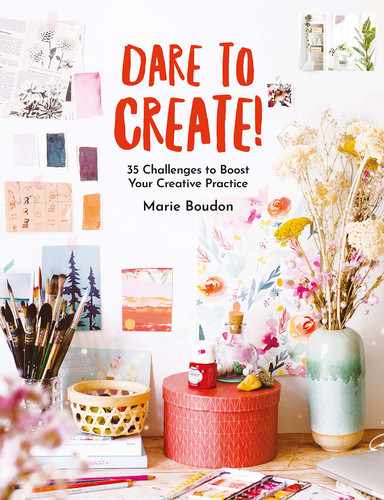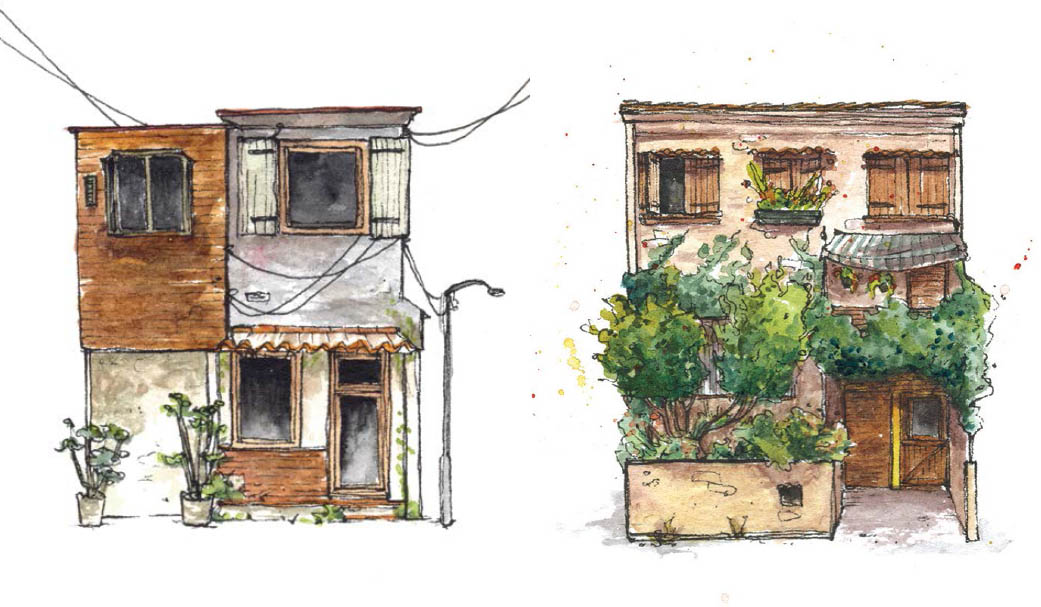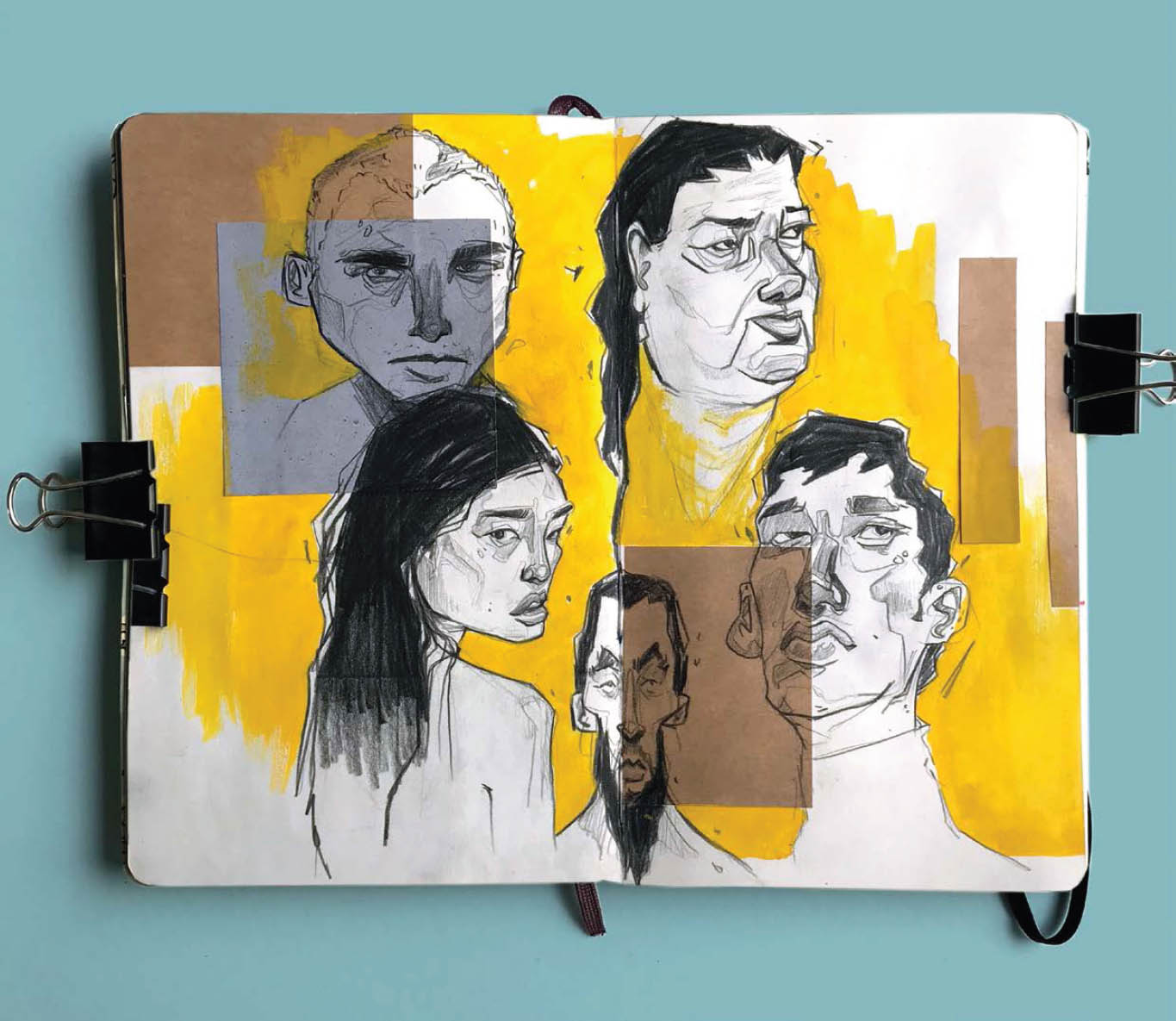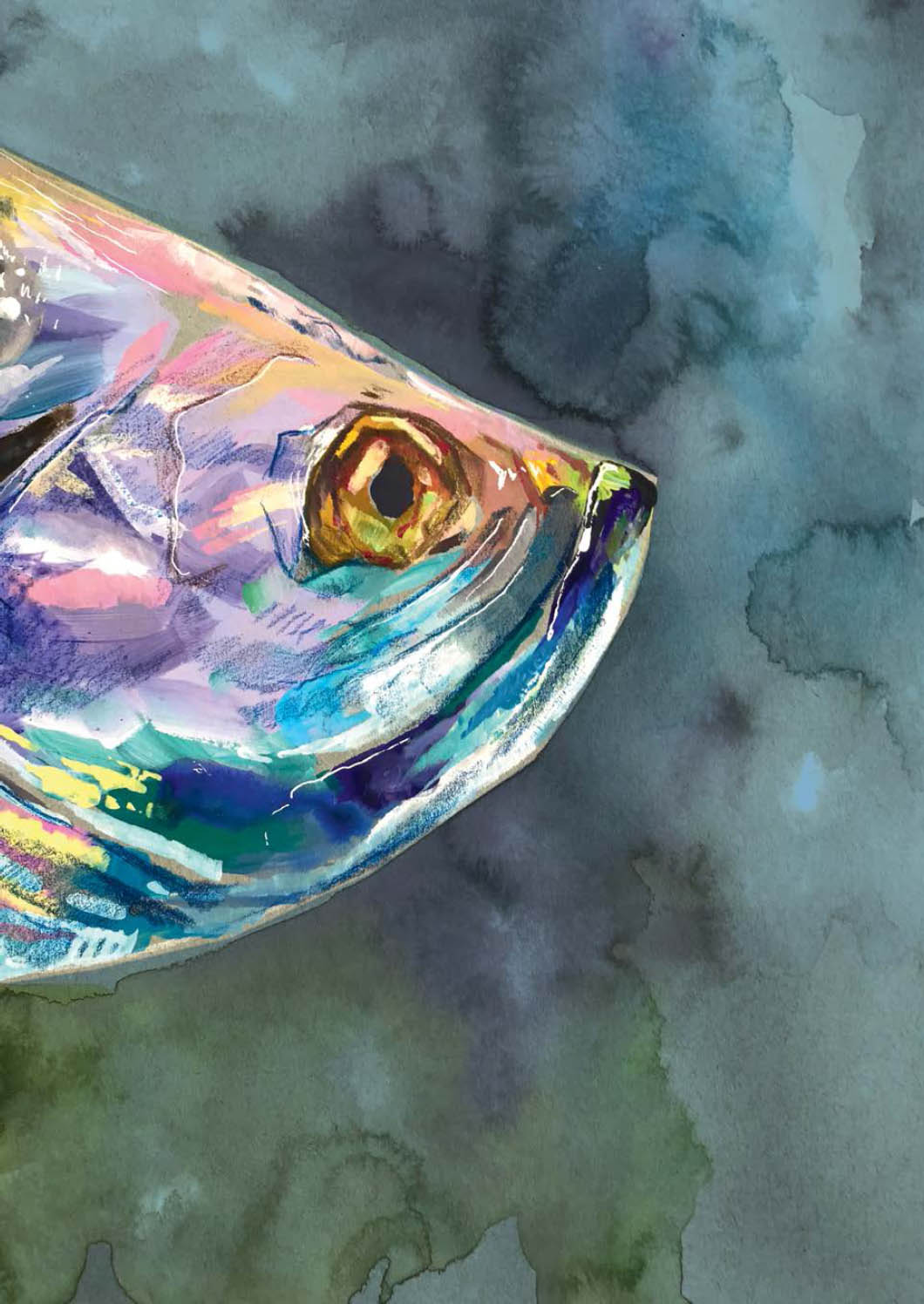PERSONAL STORY
Should you stay in your comfort zone
OR LEAVE IT?
Minnie is an English artist based in London. She taught herself in a number of mediums (gouache, watercolors, fine-tipped felt pen, pencil, etc.) in her free time. She also has a YouTube channel, where she shares her creative adventure and her advice, as well as an Instagram account and an online store. After spending a few years building her portfolio and her online presence, she started doing her art full-time in 2016 and now makes her living at it.
Can you tell us more about your current creative process?
At the beginning, I was very rigid, and I planned everything. It almost stressed me out to think about starting something if I didn’t know which direction to go or how to go about it. That probably came from the fact that I was not patient enough to paint anything more than once. A creation had to be a success the first time around; otherwise, I dropped it. Fortunately, I worked on getting away from this way of seeing things. I still don’t like to work on the same subject more than once, but now I am more tolerant about what I consider to be a “success.” I plan much less than before, and I take advantage of the process more. Even if I have a particular goal in mind, I let my art guide me, and I know that I will be happy with the result.
Houses, 2018.
Do you have suggestions for getting outside your comfort zone and taking risks?
I don’t think it’s bad to stay within your comfort zone. For Inktober 2017 [Author’s Note: this was a challenge started by Jake Parker in 2009, which involves making an ink drawing every day for the month of October], I only drew houses because it was a subject I was comfortable with. That helps me feel confident, and even if I make some mistakes, I know I will be happy with the result. For me, one of the joys of creating is enjoying the experience, the process, but also, if possible, the final result.
Of course, if you want to make progress as an artist, it’s useful to try new things, to step outside your comfort zone. I think that the best way to approach a new subject is to try to have fun with it. Avoid being too radical and saying something like, “My work is too drab, so from now on, I have to add color everywhere.” Keep up your creative habits, and then, alongside that, gently try out some new things. Start with small things, like creating a color wheel, for example, abstract motifs using new color palettes. Create just for the sake of creating, without pressure, just to try things out. That way, you may discover that actually you do like working with more color, and you will be less stressed, a little more at ease as you incorporate these new elements into your work, little by little.
Sketchbook, 2018
I don’t think that we should force ourselves to completely transform our work, to make it more complex and daring. We should be prepared to try things out, and that ought to provide the chance for us to let go, to give ourselves permission to make mistakes and to learn. Ask yourself whether you’re staying in your comfort zone because you are afraid of doing something new and you don’t want to make mistakes, or because you are happy with what you’re doing. If your artistic process suits you well, all the better! Then it’s not worth it to start big changes, just for the sake of it.
If you decide you need to start questioning your work, how do you go about it?
When I start feeling a little too comfortable in my work—even though I do believe that periods of calm are needed—I always end up losing interest in my art. That’s the signal, for me, that I need to adopt a stricter approach and push myself a little: plan out a project, make sure I follow up with it, commit to studying a subject in depth a little every day, and so on.
Do you have advice for how to improve yourself?
In my opinion, you have to start by getting rid of the idea that art is simply a spiritual and sensory experience. Some people disagree with me, but I believe that an artist can be compared to a machine. We use inspiration, and then we make a product out of it— our own interpretation—a painting or a composition, whether it is intended for sale or simply for our own pleasure. At the heart of a machine is its mechanism, the combination of elements that, taken together, allow for balance and improvement. Take a high-level dancer, for example. From the outside, what we see are graceful movements, but behind the scenes, there is the repetitive training, pain, and maybe also a little wiggling of the hips in the bathroom mirror when no one is watching, just for fun.
In order to make the machine more productive, it is essential to spend some time on it. This is not original advice, but if you are not making progress, ask yourself whether you are spending enough time on it. Make your art into your routine; for me, it’s every morning after I get dressed. And what should you paint? If you are bursting with ideas, if you know exactly what you want to fill up your notebook with, then go ahead. Take advantage of these periods of inspiration. If you find yourself facing a blank page, on the other hand, that’s the time to practice and learn. You can take tutorials, courses, study the masters, paint from nature, and so on. You need to apply what you learn. Spend some time using these new resources, otherwise you will always be limited by what you think you know. And even if you read all the books in the world, what you read won’t sink in.
Then, I think it is key to make mistakes, to build a community so that you can receive constructive criticism, and to set challenges for yourself. For example, if you don’t draw feet well, make that a challenge for thirty days. Another idea, if you want to push yourself further, is to illustrate a short story or to fill a notebook: I have a lot of suggestions on this subject on my YouTube channel. If I could only give one piece of advice, it would be that the difference between you and the artists that you admire does not come from your genes, it’s not luck; it’s a formula, it’s a mechanism, and it’s doable. Just like them, you have all the pieces of the machine at hand, you just have to start putting them together.
What are your most recent projects?
Since the summer of 2018, I have been wanting to tell stories through my art. I love documenting the trips I take, the experiences I have, capturing those memories. My project has been to illustrate a travel diary from one of my most recent escapades, a trip to Lisbon.
Fish, 2018.
YouTube : Minnie Small
Site : www.semiskimmedmin.com




